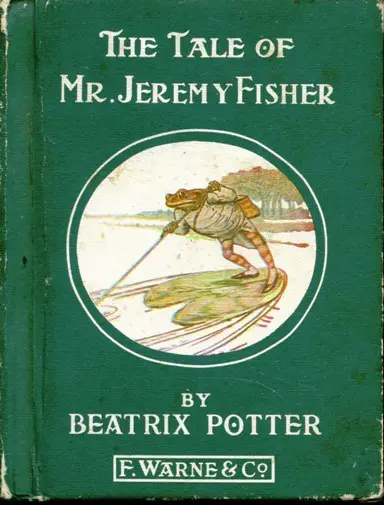The Tale of Mr. Jeremy Fisher (1906) is one of Beatrix Potter’s more popular stories, and is an excellent example of how to write a sympathetic main character. Publishers had been telling Potter since she wrote it in 1893 for her last nanny’s son that frogs aren’t cute and fluffy enough to warrant main character status in children’s literature. This feels almost unbelievable today, but Potter helped pave the way for non-fluffy stars in picture books.
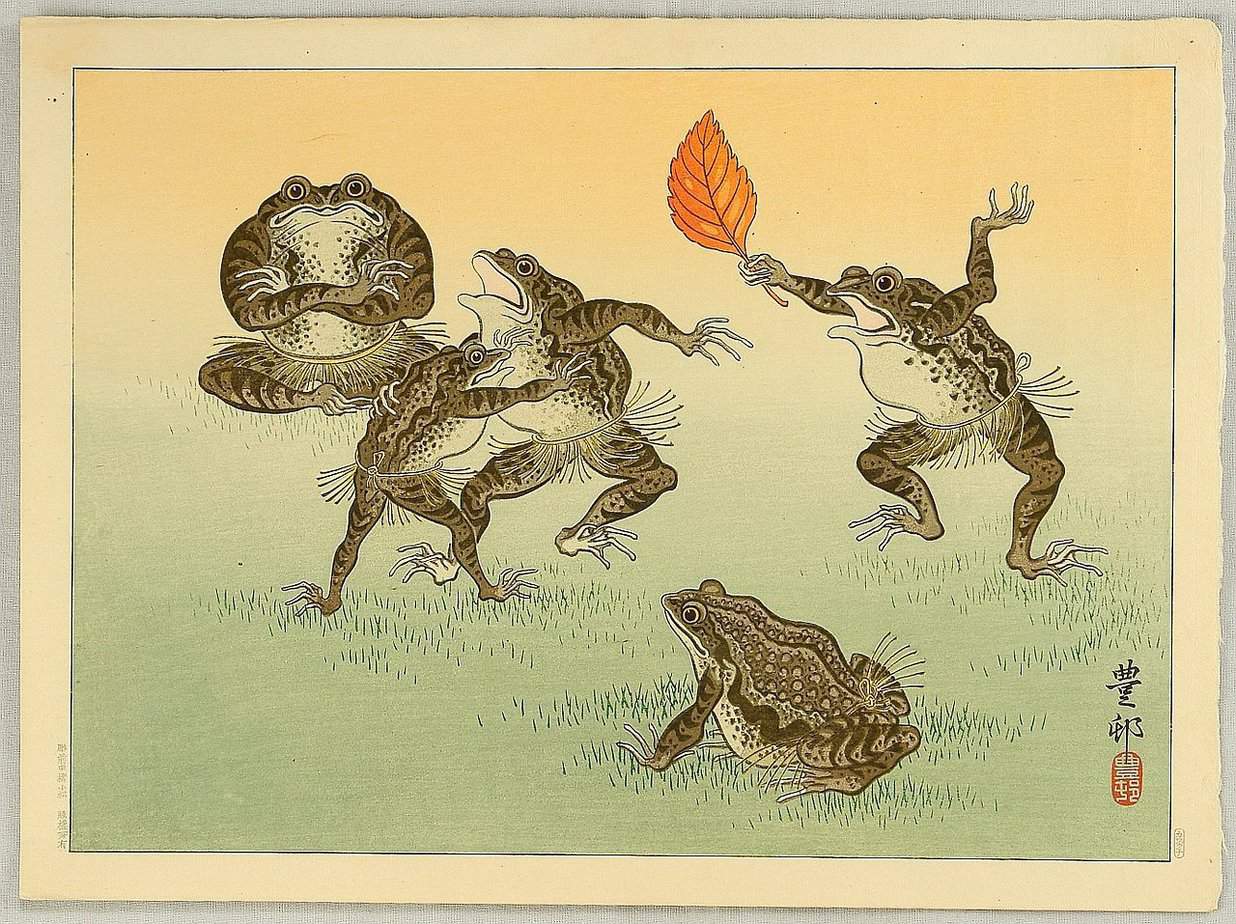
STORYWORLD OF JEREMY FISHER
JEREMY’S HOUSE
Jeremy Fisher lives in a part human, part animal dwelling, which looks like a regular house but with water slopping all around the corridors and larder. (Just this week I’ve had the washing machine overflow, which calls to mind Jeremy Fisher.)
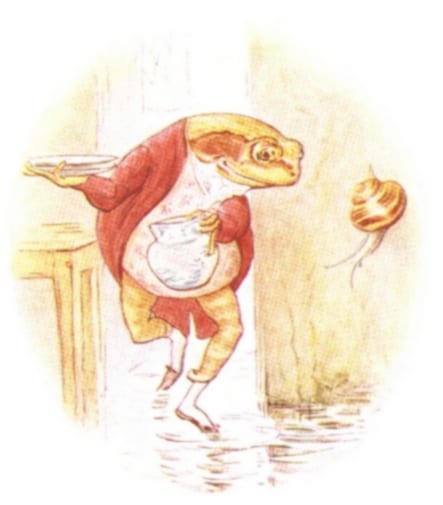
STICKING PLASTERS
I was surprised to read that when Jeremy gets mildly injured he reaches for the sticking plasters. I didn’t think they’d have been around that long. I looked up ‘when were sticking plasters invented’. Certain American websites think they didn’t exist until Johnson & Johnson made them, but the adhesive plaster has a much longer history in England. These days I don’t hear kids talk about ‘sticking plasters’ — Band-aid seems to have suffered the fate of generification.
Beatrix sold Jeremy Fisher partly on her beautiful scenery to compensate for the unappealing amphibian. So The Tale of Jeremy Fisher is one of Potter’s most beautiful books. The flora, the mountainous background with its misty aerial perspective and the reflections in the water are beautifully rendered. Jeremy Fisher himself is patterned in what looks (to the modern eye) like camo pants, but they’re actually his own skin.
SYMBOLISM OF WATER
Potter is making doubly symbolic use of the water. Consider bodies of water two separate realms in storytelling: The water’s surface and the water’s depths. The water surface functions more like a vast plain (a la the Wild West) whereas the depths are more like outer space — you never know what can come out of it. You can’t see things coming, either. Humans have a natural fear of the ocean, and the further down we go, the more gruesome the fish life appears to us.
STORY STRUCTURE OF JEREMY FISHER
SHORTCOMING
Through my contemporary lens, Jeremy Fisher is sympathetic in his own right, even without the help of lush scenery. Potter did a great job of his body language and face. The illustration below succeeds in making him look super cute, don’t you think? It’s all in the tilt of the head and perhaps in the underbite jaw.
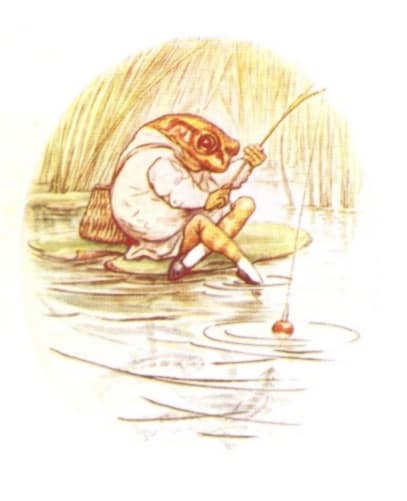
Jeremy’s Shortcoming is that he is a low down on the food chain. Potter depicts him as fully a part of it — Jeremy plans to eat minnows, which he catches with worms. He invites to dinner a creature who only eats salad. The reader is made fully cognisant of the food chain and Jeremy’s place within it. There’s nothing sentimental about these stories.
Potter makes Jeremy sympathetic with subtle injections of humour. For instance, his ‘boat’ looks ‘very like the other lily-leaves’. In fact it’s just a lily leaf, not a boat at all. So Jeremy thinks of himself as a human. I know when my dog does things that appear human, I find him very cute. (Curling up in my bean bag, making use of a blanket to keep warm, learning how to open the door etc.) This tends to compensate for the annoyance.
DESIRE
Jeremy Desires minnows (small fish) for his dinner. Ideally he wants to catch more than he needs so he can entertain his friends at his house. This is a likeable sort of desire — we can see Jeremy is a generous ‘person’. Like actual animals in the wild, his relationship with killing isn’t about power (with humans it’s often about power), but about sustenance.
OPPONENT
Jeremy’s Opponents are the much larger fish who swim beneath his ‘boat’. They can eat him up at any time. (He seems remarkably relaxed, considering.)
PLAN
- Dig in the garden for worms
- Take can of worms to the ‘boat’
- Dangle worms in water on the end of a fishing line
- Catch minnows
- Take minnows home to cook for dinner
He gets as far as 3.
BIG STRUGGLE
The Battle is beautifully set up, because Potter’s unseen narrator (Potter herself) tells us before the dire moment that the situation would have been dire had he not been wearing his macintosh. This leads us to expect less than what happens: We think he’s going to get terribly splashed.
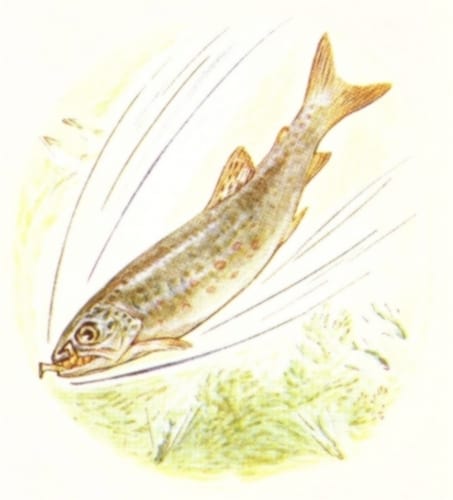
ANAGNORISIS
Plot revelation: In fact Jeremy’s almost eaten. He is only spat out because the big fish doesn’t like the taste of the macintosh. This would feel like a shock to the young reader.
Jeremy’s Anagnorisis is that he’s not safe down near the water and he won’t be going fishing again.
NEW SITUATION
But we’re given a nice cosy New Situation, with the three friends enjoying a (disgusting) meal together around Jeremy’s dinner table. The original plan didn’t work out, but Jeremy came up with a modified menu.
